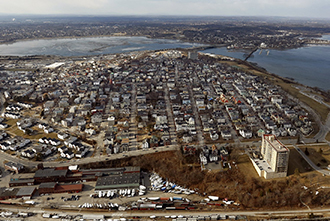The late Yogi Berra could have been talking about the Portland housing market when he said, “nobody goes there anymore. It’s too crowded.”
The increasing desirability of in-town city life combined with slow growth in the number of housing units has put so much pressure on the inventory that it’s hard to find a place to live if you are not well off.
Nobody lives here anymore, it’s too expensive.
Obviously, like Yogi’s restaurant, the virtually zero vacancy rate in Portland’s rental market tells you that somebody is living here. But supply is not meeting the demand, and moderate-income people are finding housing out of reach. Left unchecked, the people we need to make the local economy hum will be pushed away from access to good-paying jobs, public transportation and schools, leaving fewer people here to share the costs of city serivices.
The Portland City Council is considering a proposal to address this situation called inclusionary zoning. It will not make the problem go away, but it would give the city an important tool in fighting it, and it should get the council’s support.
Under an inclusionary zoning system, developers of market rate housing would have to set aside affordable units or pay into an affordable housing fund so the number of affordable units would increase as the city grows.
Opponents of the strategy say that it simply makes some housing more affordable by making other housing more expensive. They are not wrong.
If somebody pays less it means that other people will pay more. But that is more desirable than turning the city into an elite-only enclave, where there is no place for many of the people who want to be part of the community.
There are a number of forces at play here. Families are getting smaller and apartments that used to hold a mother, father and four kids now are home to two friends.
Cities are becoming desirable places to live. Young people starting their careers and older “empty nesters” are moving in, attracted by easy transportation and access to services and social life.
The free market is not delivering a mix of housing for people of diverse means in the places where it is needed. Requiring set-asides is one of the ways a city can preserve economic diversity. The others include rent control and rent subsidies that also raise cost shift issues.
It would be a mistake to wait and hope that affordable housing will just spring up on its own. Keeping the city a place where people of all incomes can live will take combined efforts from federal, state and city governments as well as the private and non-profit sectors.
One zoning change won’t do it, but it’s a step in the right direction.
Send questions/comments to the editors.



Success. Please wait for the page to reload. If the page does not reload within 5 seconds, please refresh the page.
Enter your email and password to access comments.
Hi, to comment on stories you must . This profile is in addition to your subscription and website login.
Already have a commenting profile? .
Invalid username/password.
Please check your email to confirm and complete your registration.
Only subscribers are eligible to post comments. Please subscribe or login first for digital access. Here’s why.
Use the form below to reset your password. When you've submitted your account email, we will send an email with a reset code.